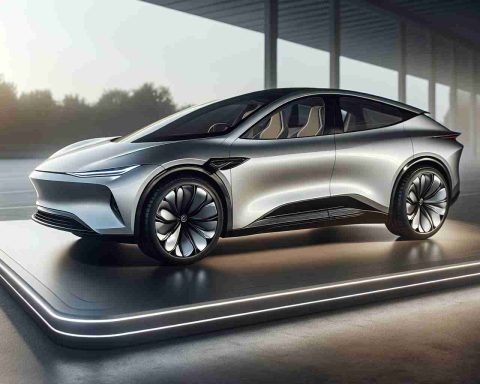- The U.S. energy storage capacity is projected to exceed 25,000 megawatts by late 2024, fueled by the ITC’s 30% tax incentive for standalone storage.
- The energy storage market is experiencing rapid growth, with deployment rates increasing by 80-85% in just two years.
- Significant concerns include potential tariffs of 800-900% on battery components, which threaten supply chains for energy storage and EVs.
- China’s dominance in battery manufacturing creates challenges for American supply chain development, highlighting the need for domestic resilience.
- The rising energy demands of AI and data centers are expected to account for 12% of U.S. electricity needs, increasing the importance of storage solutions.
- Innovative financing models are anticipated to help sustain revenue and momentum in the evolving energy storage landscape.
The U.S. energy storage scene is buzzing like never before, and it all hinges on one powerful ally: the Investment Tax Credit (ITC).
In a recent webinar hosted by the Clean Energy States Alliance, experts revealed that as of late 2024, the nation’s energy storage capacity rocketed past an impressive 25,000 megawatts. The surge began with the introduction of the ITC for standalone storage in January 2023, a game-changer that offered a substantial 30% tax break, igniting a remarkable 80-85% growth rate in deployments over two short years.
However, just as excitement builds, so do concerns. New import tariffs and changing trade policies threaten to cast shadows over this thriving industry. A potential 800-900% tariff on key battery components could unravel the supply chains crucial for both energy storage and electric vehicles. Experts warn that while China’s dominance in battery manufacturing creates challenges, maintaining an American supply chain is essential for future resilience.
Adding fuel to the fire, the rising demand from AI and data centers is reshaping energy consumption patterns, with projections suggesting these centers could soon account for 12% of U.S. electricity needs. This increased load emphasizes the critical role of storage solutions to smooth out energy fluctuations.
As the landscape evolves, industry leaders foresee the adoption of innovative financing models to stabilize revenues and keep momentum alive. The future of energy storage holds incredible promise, but navigating the hurdles ahead will require strategic advocacy and a steadfast commitment to domestic growth.
Key takeaway: The combination of tax incentives and emerging demands can pave the way for a robust energy storage future, but vigilance is needed to overcome trade challenges.
Powering the Future: How ITC and Market Trends Are Transforming U.S. Energy Storage
In recent years, the U.S. energy storage sector has experienced unprecedented growth, largely thanks to the Investment Tax Credit (ITC). The latest insights reveal that there’s more to this story than just numbers, highlighting emerging trends, innovations, and pressing challenges.
Market Insights
1. Projected Energy Storage Growth: By late 2024, the U.S. energy storage capacity is expected to exceed 25,000 megawatts, marking a significant milestone. This surge, propelled by the ITC for standalone storage, reflects an impressive 80-85% annual growth rate that began in 2023.
2. Impact of AI on Energy Demand: The growing demand from artificial intelligence (AI) and data centers is reshaping energy consumption. By 2025, these centers are projected to account for approximately 12% of total U.S. electricity demand. This shift underscores the necessity for robust energy storage solutions.
3. Innovative Financing Models: To navigate potential market instability, industry leaders are developing innovative financing options. These models aim to create sustainable revenue streams that can adapt to fluctuating demands and changing regulatory environments.
4. Trade and Supply Chain Concerns: The introduction of new import tariffs, potentially reaching 800-900% on key battery components, poses risks to the energy storage industry. Experts emphasize the critical nature of developing a resilient domestic supply chain to counteract reliance on foreign manufacturing, particularly in light of China’s significant role in battery production.
Pros and Cons of Energy Storage
– Pros:
– Enables the integration of renewable energy sources.
– Helps in demand response management.
– Provides backup power during outages.
– Cons:
– High initial capital costs.
– Dependence on foreign materials for production.
– Regulatory uncertainties and market volatility.
Key Questions
1. What are the main advantages of the ITC for energy storage?
– The ITC’s 30% tax credit significantly lowers capital costs, incentivizing businesses and homeowners to invest in energy storage systems. This financial boost facilitates greater deployment, contributing to overall growth in the renewable energy sector.
2. How will tariffs impact battery prices and energy storage accessibility?
– The proposed tariffs could drastically increase the costs of battery components, leading to higher prices for energy storage systems. This price increase may hinder adoption rates and slow down the momentum built by the ITC.
3. What innovations are shaping the future of energy storage?
– Innovations in battery technology, including solid-state and flow battery developments, are promising enhancements in efficiency and lifespan. Additionally, new financing models are being developed to support widespread market adoption amid changing economic conditions.
Looking Forward
The energy storage landscape is evolving rapidly, driven by policy changes, technological advancements, and shifting market demands. As stakeholders work to overcome challenges like tariffs and supply chain vulnerabilities, the combination of tax incentives and innovative financing could catalyze a sustainable energy storage future.
For more information on energy trends and innovations, visit Energy.gov.















